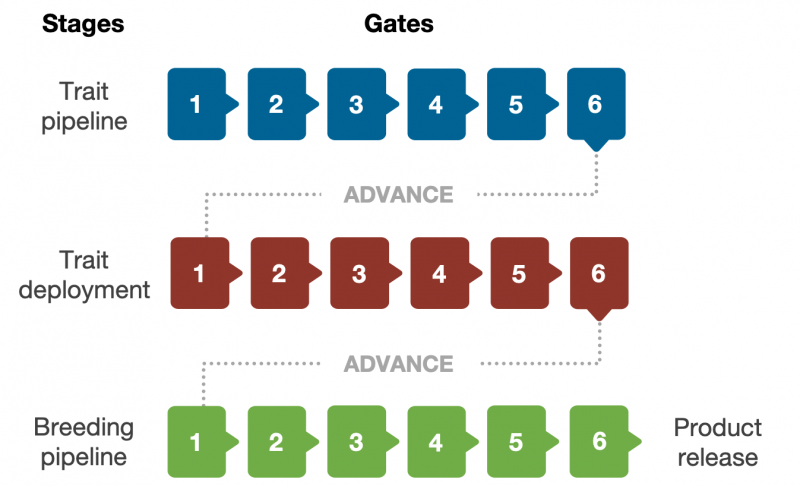Video: George Kotch, EiB product design and management lead, explains stage gates in five minutes.
High-performing breeding programs not only have a strong idea of customer needs, they also exercise full control of the breeding pipeline to ensure that the right products are delivered and adopted.
The Excellence in Breeding Platform (EiB) has begun collaborating with a global group of expert scientists from the CGIAR and national breeding programs to develop a common stage-gate system for managing our product pipelines.
Applied to public sector breeding, product pipelines include development of varieties, germplasm and traits.

A stage gate process is a disciplined way of managing a product from design to delivery through a series of stages and decision-making gates. Each stage-gate is a clearly defined decision point reached as products pass from development through delivery, with the product profile being the key measure to judge whether each product can pass to the next step in the development pipeline.
Stage-gates assure data-driven decisions, increased transparency and less silo working, significantly reduce errors and create accountability for delivering a product as quickly as possible.
As well as making it possible to ensure that a breeding program is on course to deliver the varieties promised to donors, they also create clear opportunities for cross-functional input to come from outside the breeding team. Input from gender or socioeconomics experts can be incorporated throughout the process of product development, and important traits that may not be part of the product profile, for example nutrition of biofortification, can also be introduced across the breeding program.
As a result of adopting a stage gate system, CGIAR and NARS breeding programs will have more control over their ability to deliver on their commitments, have greater transparency to donors, and be able to develop a brand or reputation for the impact delivered by their products.
Comments
Going beyond release